Architect Tadao Ando breathes life into new museum for Gucci’s billionaire boss
French billionaire entrepreneur Francois Pinault, head of luxury goods group Kering, which owns Gucci and Yves Saint Laurent, recently unveiled his 10,000-strong private art collection in Paris, close to the Louvre.
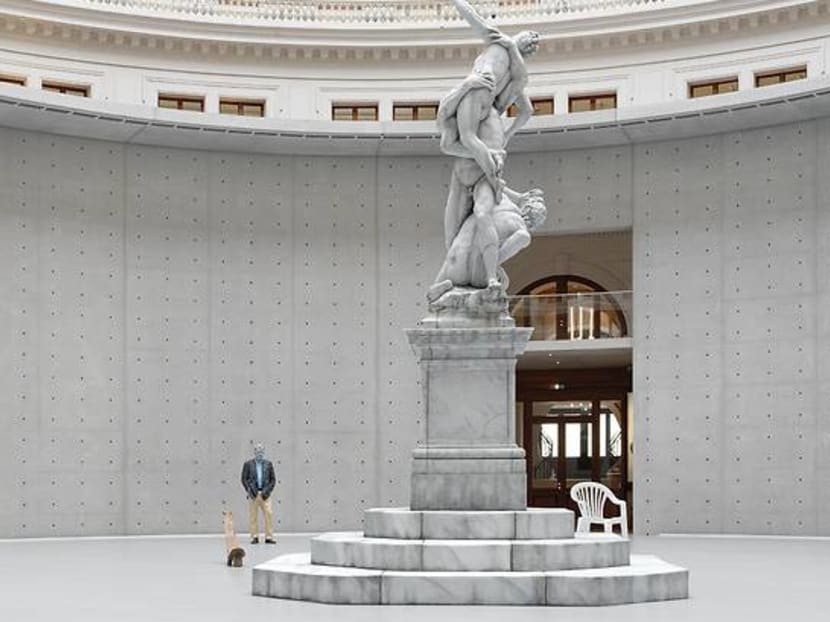
Located a short walk from Paris's temples to culture – the Louvre and Centre Pompidou – the venue adds to the French capital’s already rich offerings in art. (Photo: Bourse de Commerce)
When billionaire entrepreneur Francois Pinault first tried to build a museum in Paris to display his contemporary art collection two decades ago, bureaucratic infighting and delays sank the project. In an emotional article in French newspaper Le Monde, he wrote at the time of his “immense disappointment” and announced that he would renovate the Palazzo Grassi in Venice instead.
“I do not like to submit or quit,” said the self-made man whose fortune Forbes now values at US$55 billion (S$72.8 billion), to explain his reasons for decamping to Italy. “After Venice, I would like to add other cities in Europe, and one day I hope, France.”
The 84-year-old, who started in the wood business in his native Brittany and went on to build the luxury goods group Kering, which owns Gucci and Yves Saint Laurent, has finally achieved his ambition.
On May 22, Pinault presided over the opening of his museum at the meticulously renovated Bourse de Commerce, a pale stone rotunda in the heart of Paris. Located a short walk from the city’s temples to culture of the Louvre and Centre Pompidou, the venue adds to the French capital’s already rich offerings in art.
It also caps the ongoing rejuvenation of the Les Halles area, which had fallen into disrepair since a tacky shopping mall and transport hub replaced the city’s open-air food market in the 1970s. The museum now anchors the west side of a leafy park ringed by cafes – the area was bustling on a recent visit just after France’s six-month lockdown had eased.
Pinault has said he hopes the 7,000 sqm exhibition space, which will feature rotating exhibitions drawn from his collection of 10,000 works and from other institutions, can attract a wide audience and even win over contemporary art sceptics who prefer the classics.
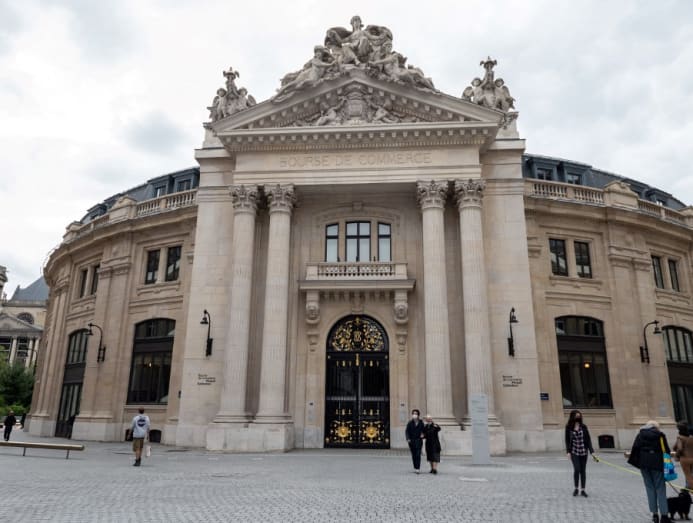
READ> Singapore’s youngest billionaire Kishin RK on disrupting real estate
“Art from the past is interesting, but we must also pay attention to what is happening in the world today and also the future,” he said in a recent radio interview.
The new museum for the Pinault Collection is housed in a structure that has had several incarnations since the 16th century, all of which are still visible. There is the so-called Medici column that the French queen consort Catherine de’ Medici had built to observe the stars. A round stone floor dates from when the city used to store grain here to feed the population before the revolution.
Then in 1889 for the World’s Fair in Paris, the building was rebuilt with a cast iron dome and glass ceiling. It was a dramatic backdrop for the business carried out here by commodities traders who hawked the sugar, coffee and cocoa that built France’s wealth during the colonial era.
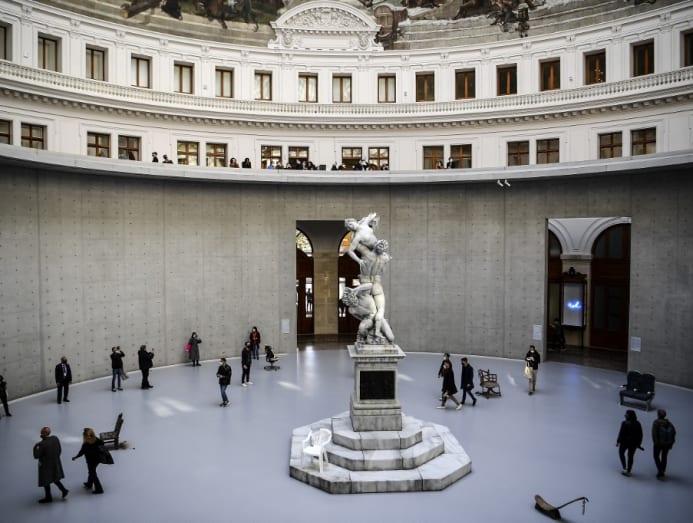
READ> Who is billionaire Bang Si-hyuk, the mastermind behind K-pop’s BTS?
Now with a four-year, €160 million (S$258 million) makeover, Japanese architect Tadao Ando has injected a dash of minimalist cool to the structure by adding a nine-metre-high concrete cylinder under its light-filled cupola. It was the third commission Pinault has given to the Pritzker prize winner, following the Palazzo Grassi in 2006, and a second museum in Venice located in an old maritime customs building on Punta Della Dogana in 2009.
Ando’s missions for Pinault have all refitted historical spaces with modern elements of cement, glass and light. At the Bourse de Commerce, his aesthetic effortlessly complements the site’s rich history.
When you walk into the Bourse de Commerce, it does not feel like a typical museum. The ticket counter has been relocated outside the building, so you step into the central exhibition space with little transition, and no ornate lobby. The galleries are not the customary square, featureless white cubes; they loop around the central rotunda, and are punctuated with windows on both the inside and outside walls, allowing in a soft natural light. The windows also create a delicious interplay between the artworks and the building itself.
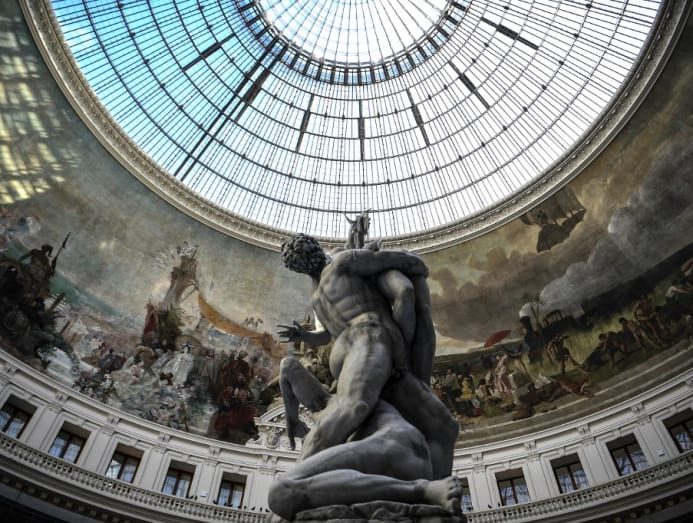
READ> Why artist Cheong Soo Pieng’s works are so precious to these Singapore collectors
As a condition of the 50-year lease that Pinault signed with the city of Paris, he had to restore the Bourse de Commerce without wholesale changes since it is classified as a historical monument. That included restoring the panoramic oil painting, “Triumphal France”, that adorns the cupola. It depicts the glories of colonisation and technological progress – complete with stereotypical images of African warriors and Japanese geishas.
The art on display counters the mural’s racism of another era. On the second floor, a full-length portrait of a young black woman by British-Ghanaian painter Lynette Yiadom-Boakye hangs next to an interior window through which the colonialist mural is visible. It serves almost as a subtle visual rebuke, explained Martin Bethenod, managing director of the Bourse de Commerce’s Pinault collection. “The art can help us contextualise the past of the building,” he said.
Another example of the dialogue between the building and the art can be seen at a display of about 30 works from David Hammons, a prominent African-American artist whose work excavates the black experience in the US. Hammons asked for his installation, “Minimum Security”, to be placed in front of a mural depicting a map of the 19th-century maritime routes that generated the wealth of Europe.
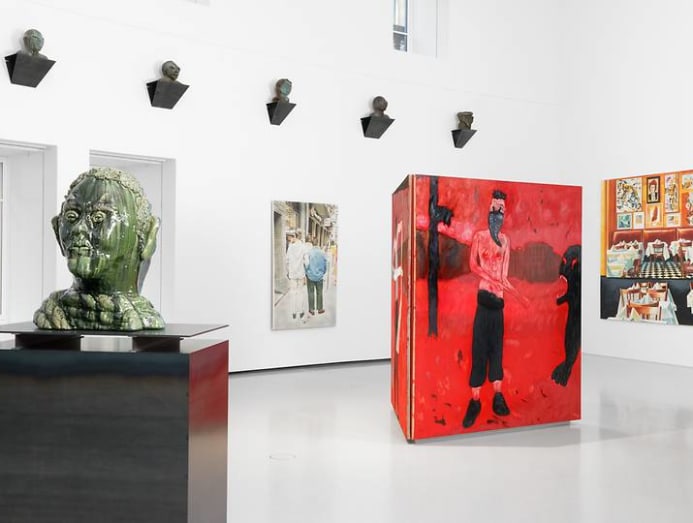
READ> Instagram-worthy glass sculptures at Gardens by the Bay
The work resembles a rusty metal cage inspired by a jail cell at San Quentin State Prison in California, complete with a rusty metal bed and menacingly creaking door. “Hammons wanted to contrast his work with the map, and for it to be dark in here to convey fear,” said Bethenod.
Many of the exhibits that Pinault has chosen for the opening carry such political messages, subtle or otherwise. (It was Pinault himself who chose the pieces, said Bethenod. “He was here every day during the renovation. Every detail, every artist is a reflection of his taste and his vision.”)
Such an overtly activist selection of works was an unexpected turn for the wealthy arts patron, especially in France where conversations about race remain taboo and complicated. France has long cast itself as colour-blind because it is a so-called “universal” republic where everyone is equal under the law. People are supposed to be citizens first, and not place too much emphasis on their ethnic, religious or sexual identities. When Black Lives Matters protests spread to Paris last year, they were greeted with confusion by the political class, and President Emmanuel Macron urged protesters not to knock over statues of slavers and colonialists as in other countries.
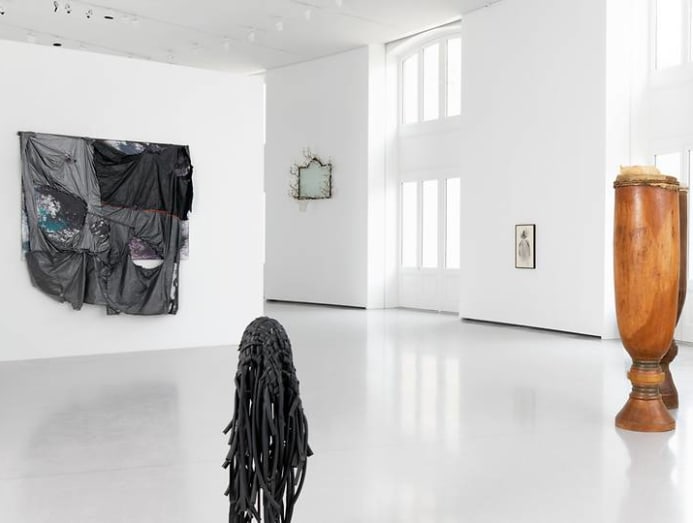
READ> Singapore street artist Yip Yew Chong’s first series of nostalgic paintings sells out in a flash
But at the Bourse de Commerce, Pinault is chez lui (at home) so he is free to provoke. “It was necessary for the selection of works to be serious, an echo of what the world has been through after more than a year of pandemic and protest movements,” said Jean-Jacques Aillagon, chief executive of the Pinault Collection.
The project is also a sign of how private money is changing a French cultural scene in which the state has long been the primary backer of museums, and is also a major funder of theatre and film. Several wealthy French families have created new arts institutions in Paris in recent years, and such foundations have an increasing influence over French arts. It remains to be seen how they will interact and compete with government-funded museums that often have budget constraints.
The most monumental of them was commissioned by Bernard Arnault, the billionaire founder of luxury group LVMH, who in 2014 opened the Fondation Louis Vuitton on the western edge of Paris in a dramatic building designed by Frank Gehry.
Arnault and Pinault, longtime business rivals, set aside that competition recently, albeit temporarily. Pinault invited Arnault to tour the Bourse de Commerce before the official opening, and the prominent collectors spent two hours visiting it together. Just as they had done in Arnault’s place before it opened.
By Leila Abboud © 2021 The Financial Times



